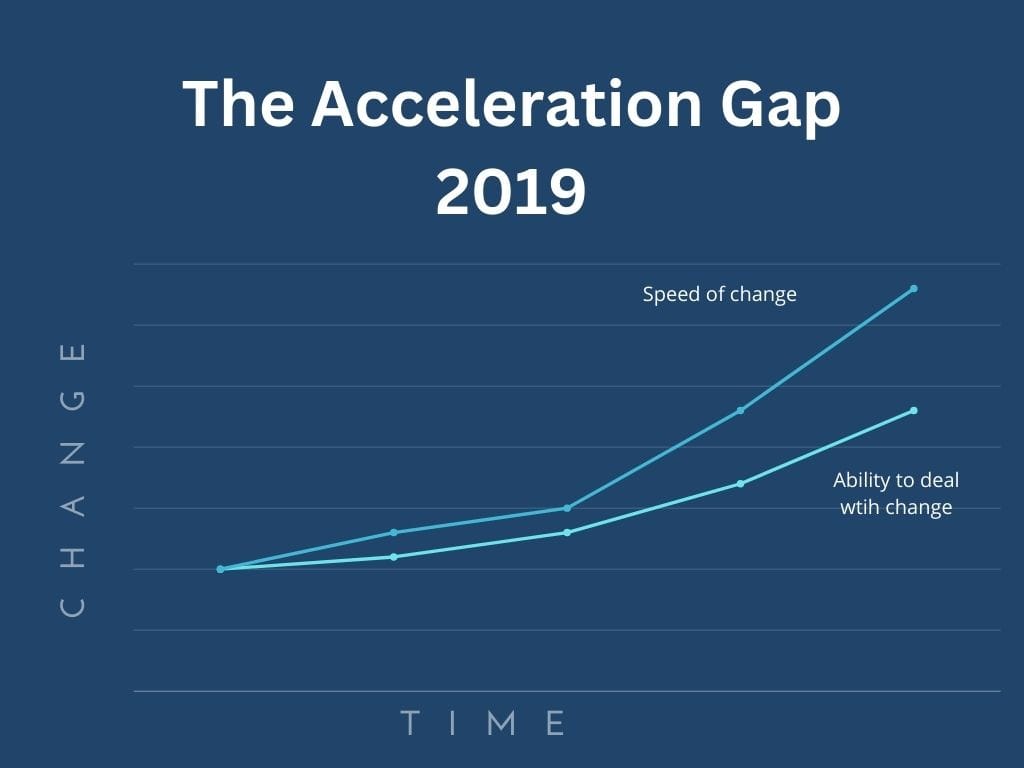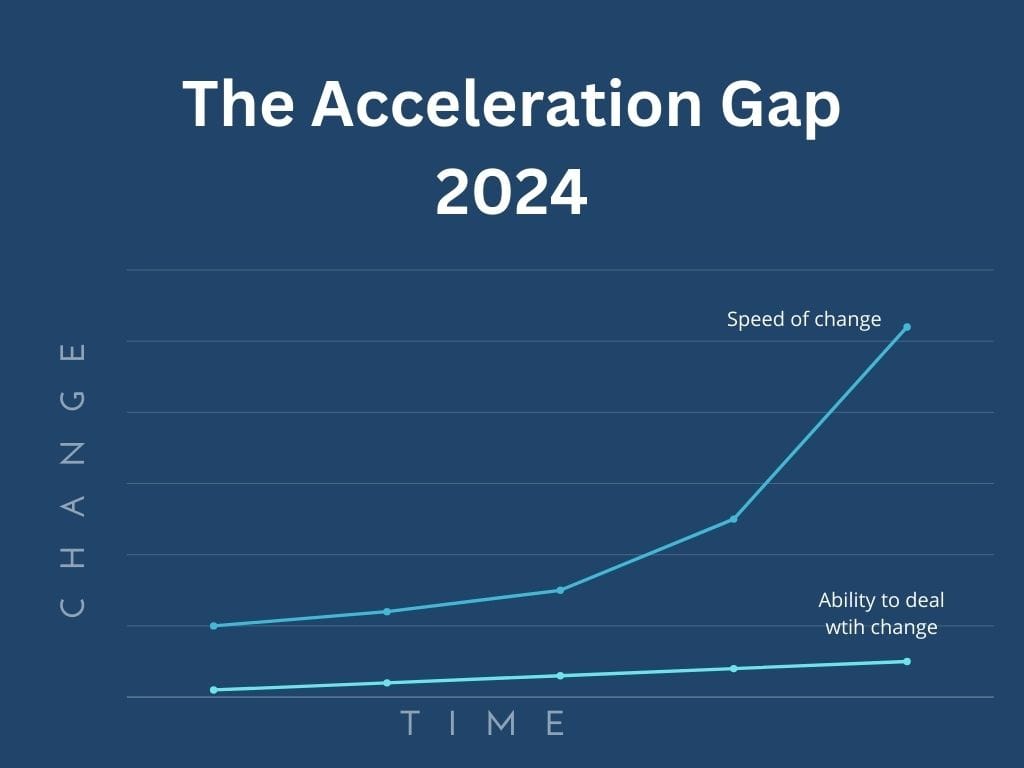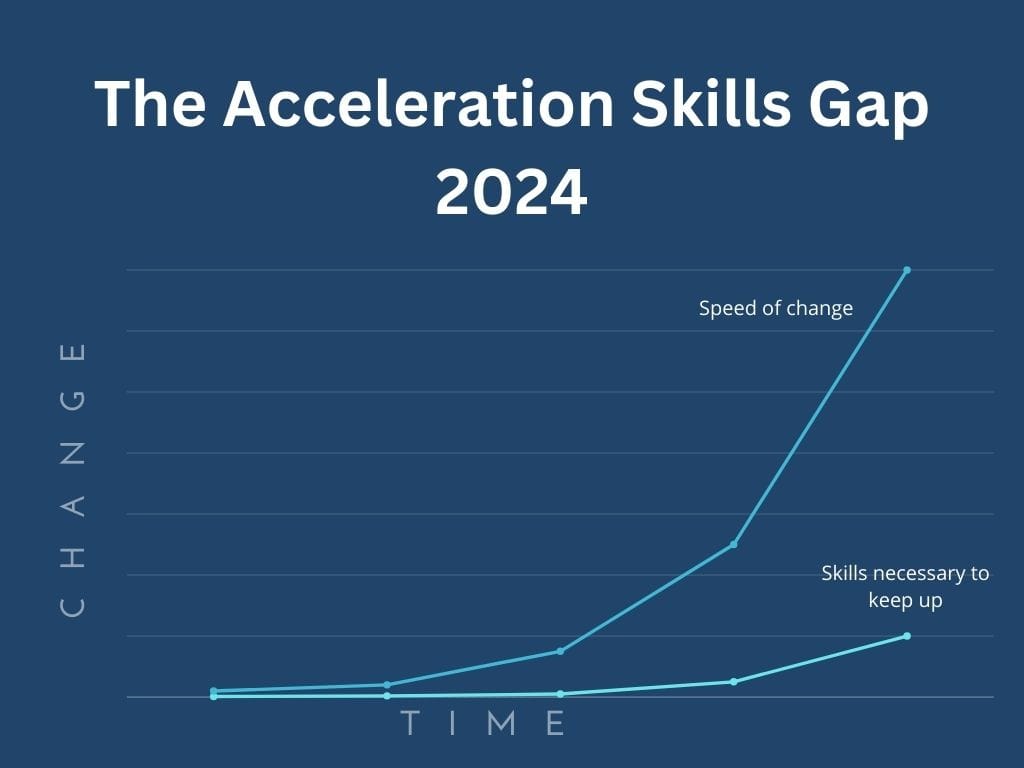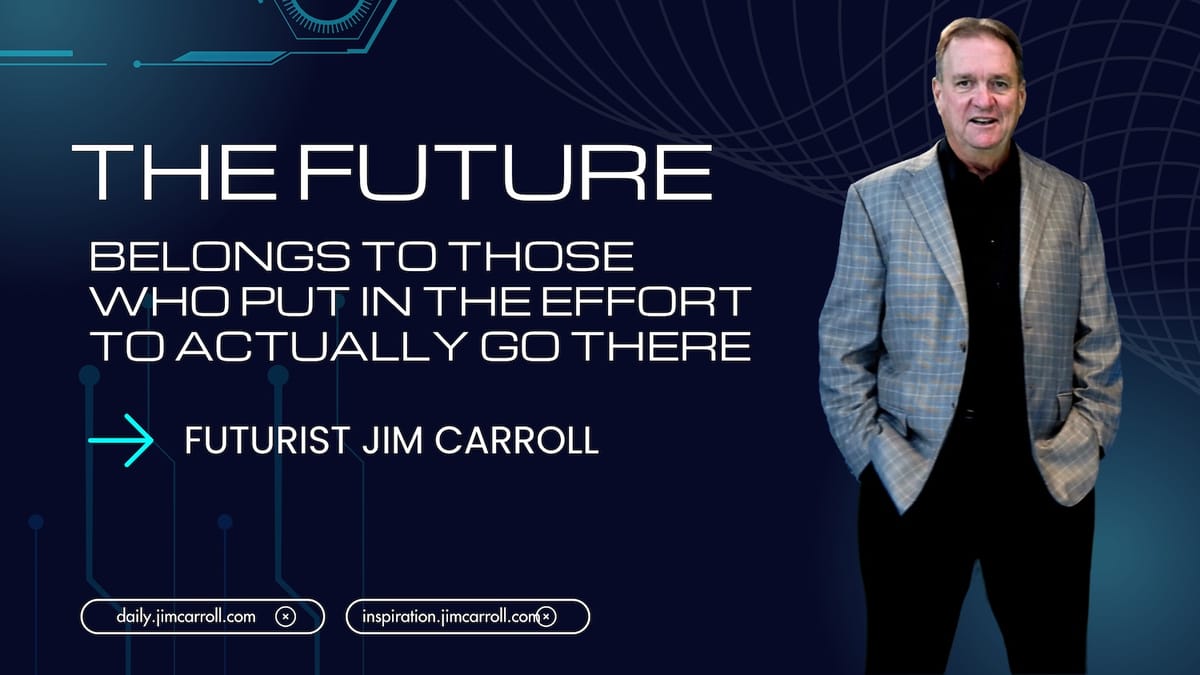"The future belongs to those who put in the effort to actually go there!" - Futurist Jim Carroll
I went into the broadcast studio yesterday to film a voyage about yesterday's inspiration, in a clip involving artificial intelligence, advanced robotics, and virtual reality - and how these trends all come together into a fascinating, accelerating future! You might find it a little bit more illuminating on what's going on with the idea of 'gyms for robots,' which is really a pretty significant trend.
While continuing to think through the implications of these trends, I kept on coming back to the realization that many organizations will not realize how quickly their industry - and hence their future - is changing. The result is that they won't do what is necessary to get to that future, and they will increasingly fall behind. There will be an increasing gap between the speed and impact of the trends and their ability to deal with those trends.
They'll be decimated by a widening of the 'acceleration gap.'
What is the acceleration gap? It's simple - the future used to be fast; now it's faster, and you are falling behind all the time. The gap is the difference between the speed at which the future is changing, and your ability to keep up with that speed of change. I often share the idea on stage with this diagram - back in 2019., I explained the gap like this:

The 'acceleration gap' has always been there, and the question I've put to my organizations over the years is this: Are you prepared to do the hard work, the heavy lifting, and the necessary effort to bridge the gap?
In the last 5 years, though, everything has changed - the world sped up, particularly with the arrival of AI, the trends that reshaped our world during the pandemic, and the continued generational acceleration of organizations. In the harsh light of our new world, one thing is clear - the future is even more complex than it was before. The other day at my event with CEOs in Houston, I updated the graph to get across the idea that the 'gap' has become even wider in the last few years.

I also shared the idea that the gap between the skills they have and the skills they need has become a chasm of ever-widening, frightening proportions.

Know this fact: bridging this gap is critical to future success - and the significance of your inability to bridge the gap is even bigger than it was before.
And yet, from everything I observe about the clients who bring me in - and those who only inquire to do so - the gap is real, it's growing, and the implications of the canyon of change are pretty profound, particularly when I think about the video I filmed yesterday and the idea of a 'gym' for robots.
There will be, for example, two types of manufacturing organizations in the future. There will be those who work hard to bridge the gap, relentlessly ingesting new ideas, technologies, concepts, and methodologies. They might build a gym for robots, and learn how to deploy advanced AI robotics on the factory floor, reducing their cost base, assembly time, and manufacturing sophistication. They'll work hard to retrain their existing workers and will hire a new team to move them into the world of 21st-century manufacturing. They'll get into the world of fast digital-twin-based product development and rapid prototyping with fast design iteration - knowing that relentless product innovation will be critical to staying relevant for a customer base that has become ever more challenging in terms of loyalty and interest.
And then, there are those manufacturing companies that will stay stuck in their world of manufacturing methodologies such as it exists today, and in but 10 short years, will be based on infrastructure, mindset, and methodology that is clear from the 'olden days.' They'll remain oblivious to the trends of tomorrow or will choose to ignore them, blissfully unaware of the real impact of doing so. They'll continue to think that the skills base they have today will be adequate tomorrow when the reality is that they are quickly becoming knowledge-obsolete. They'll refuse to adapt, out of blindness, stubbornness, or the sheer audacity and lunacy of believing that merely thinking that things will be great again will make it so. (It hasn't, and won't.)
I see the same thing unfolding in every industry out there - healthcare, agriculture, retail, warehousing and logistics, insurance. Everywhere I look, I see the 'gap,' and I see it growing.
Now think about what is happening - with crazy ideas like gyms for robots, we are, in effect, we are seeing the birth and emergence of the AI-enabled enterprise. There will be those who align with the disruption and those who don't. The impact of the 'gap' will come to have an even bigger impact than it does today. And the interesting thing? If you don't start working today to try to minimize the gap, it will become ever more difficult - if not impossible - to narrow the gap!
What do you do? Recognize that the gap exists - and bridge the gap! Remind yourself that what worked yesterday will not work tomorrow! You are on a guaranteed path to failure if you don't align with our new reality - by mastering the disconnect between speed and structure. Successful organizations will be those who can shrink the gap, minimize its impact, and turn it into an opportunity rather than a threat.
The acceleration gap is real, it’s growing, and your inability to narrow it will increasingly impact your future! In other words - the future is yours only if you decide to put in the effort to go there!
Futurist Jim Carroll has never quite understood how so many organizations can blissfully ignore what they need to do to successfully get to tomorrow. After all, they are going to spend a lot of time there.

